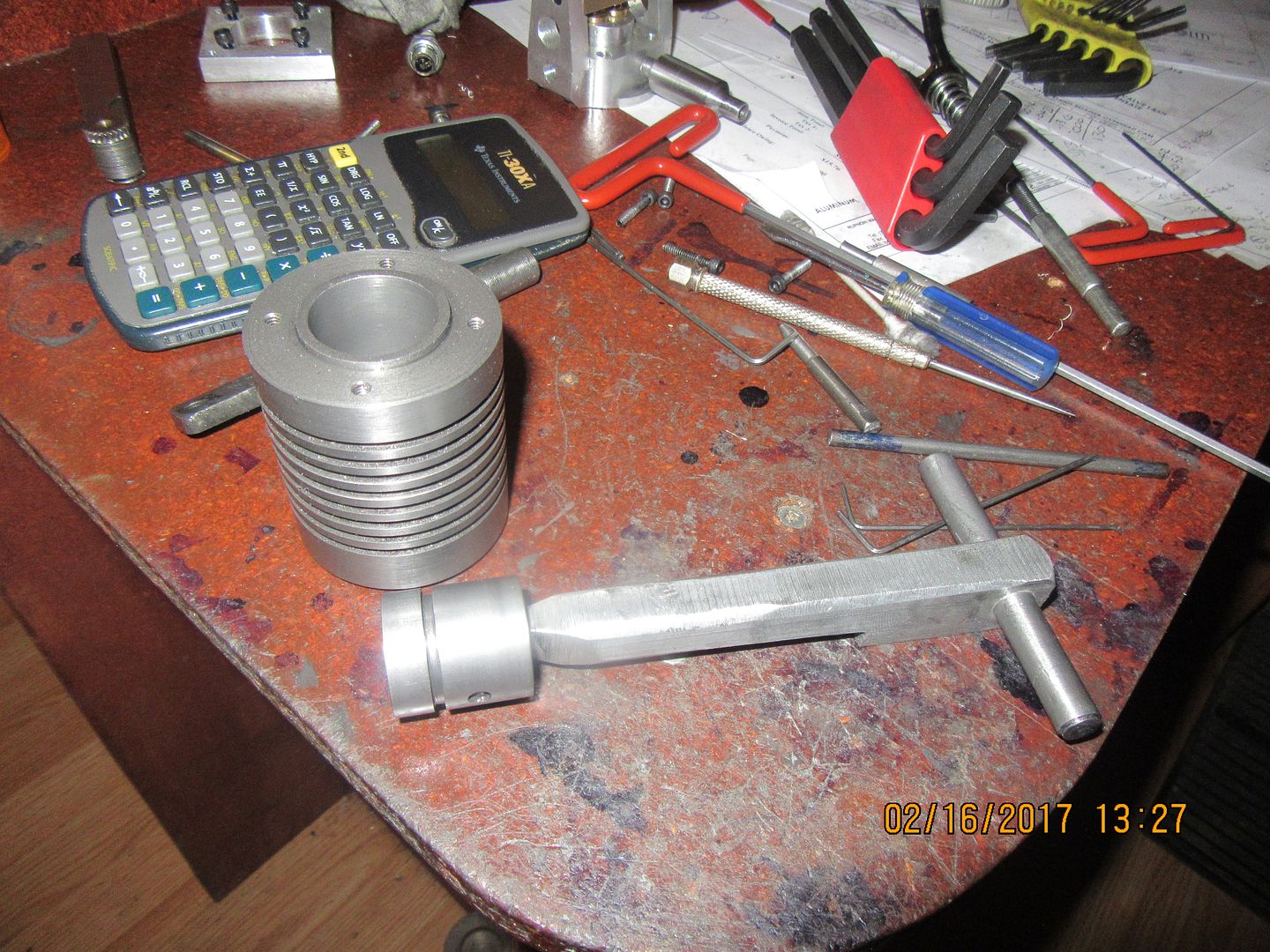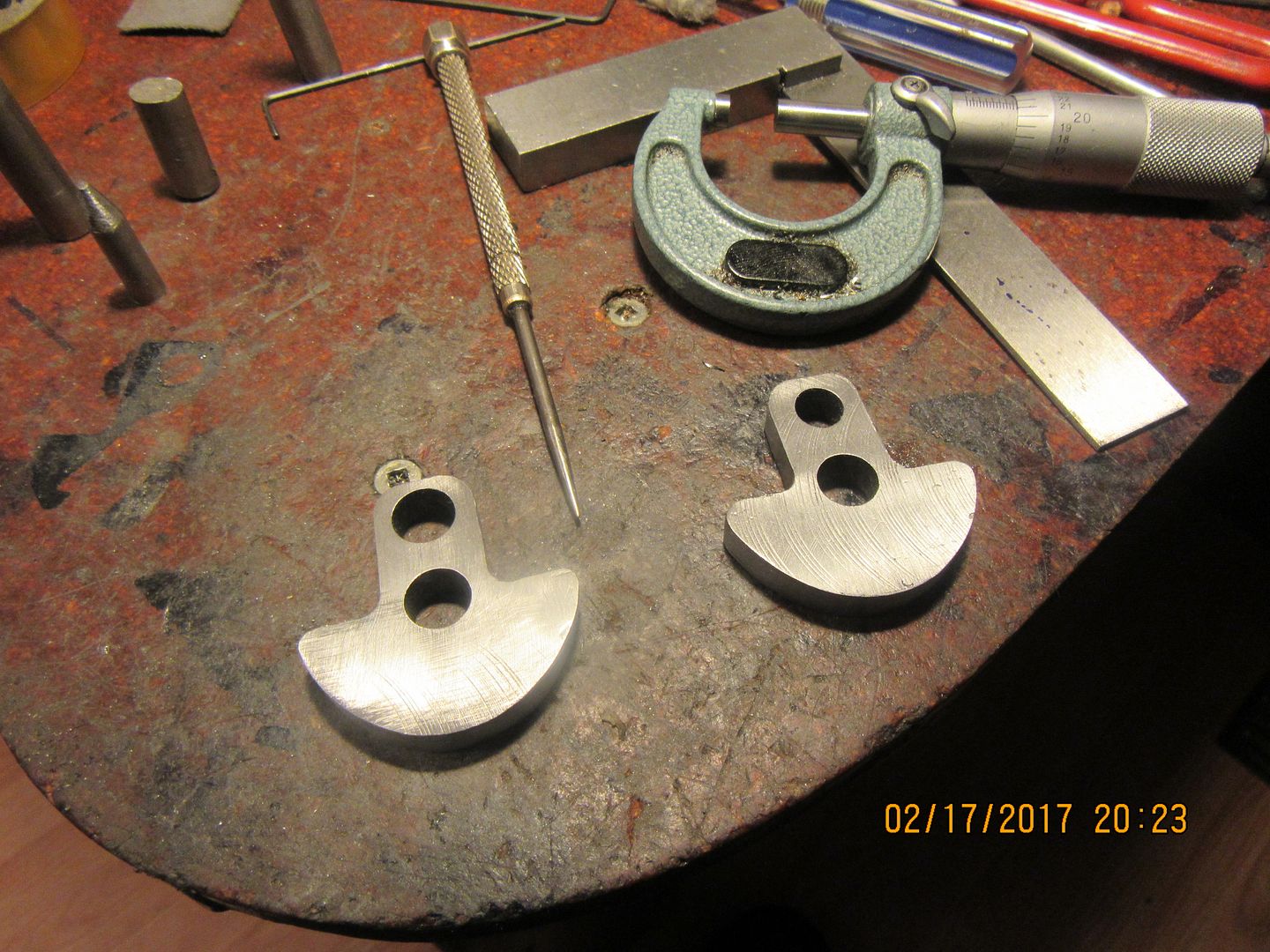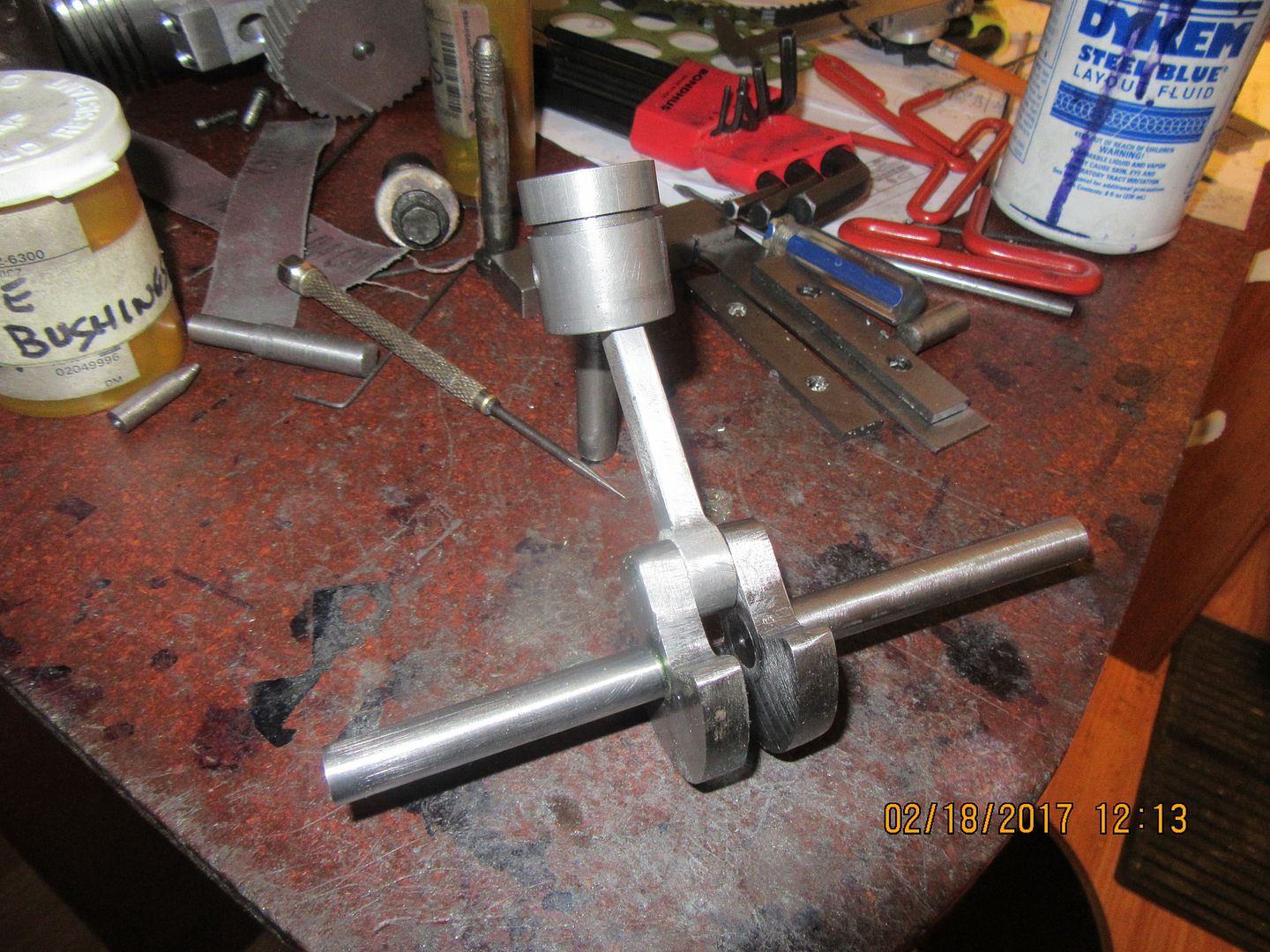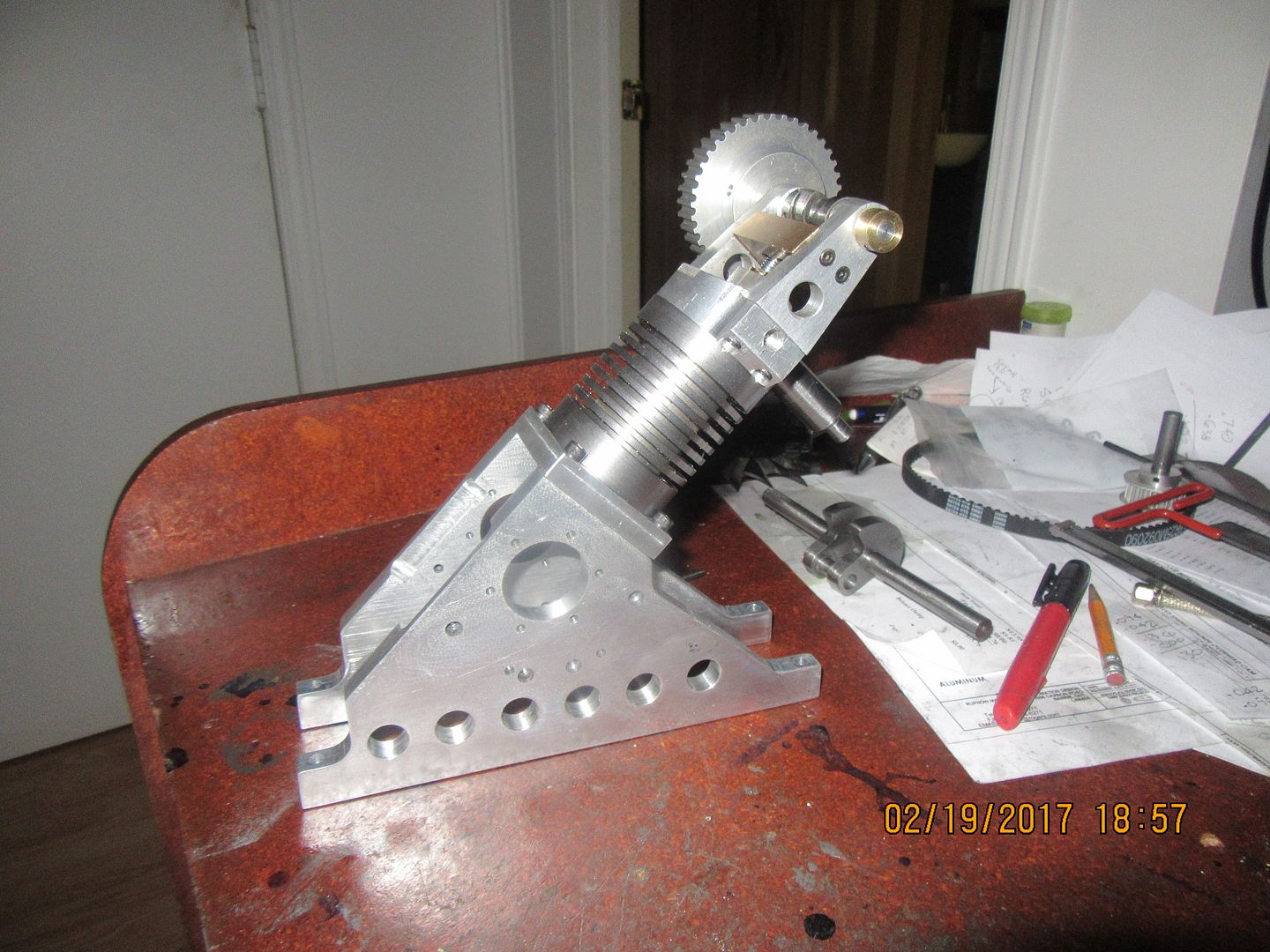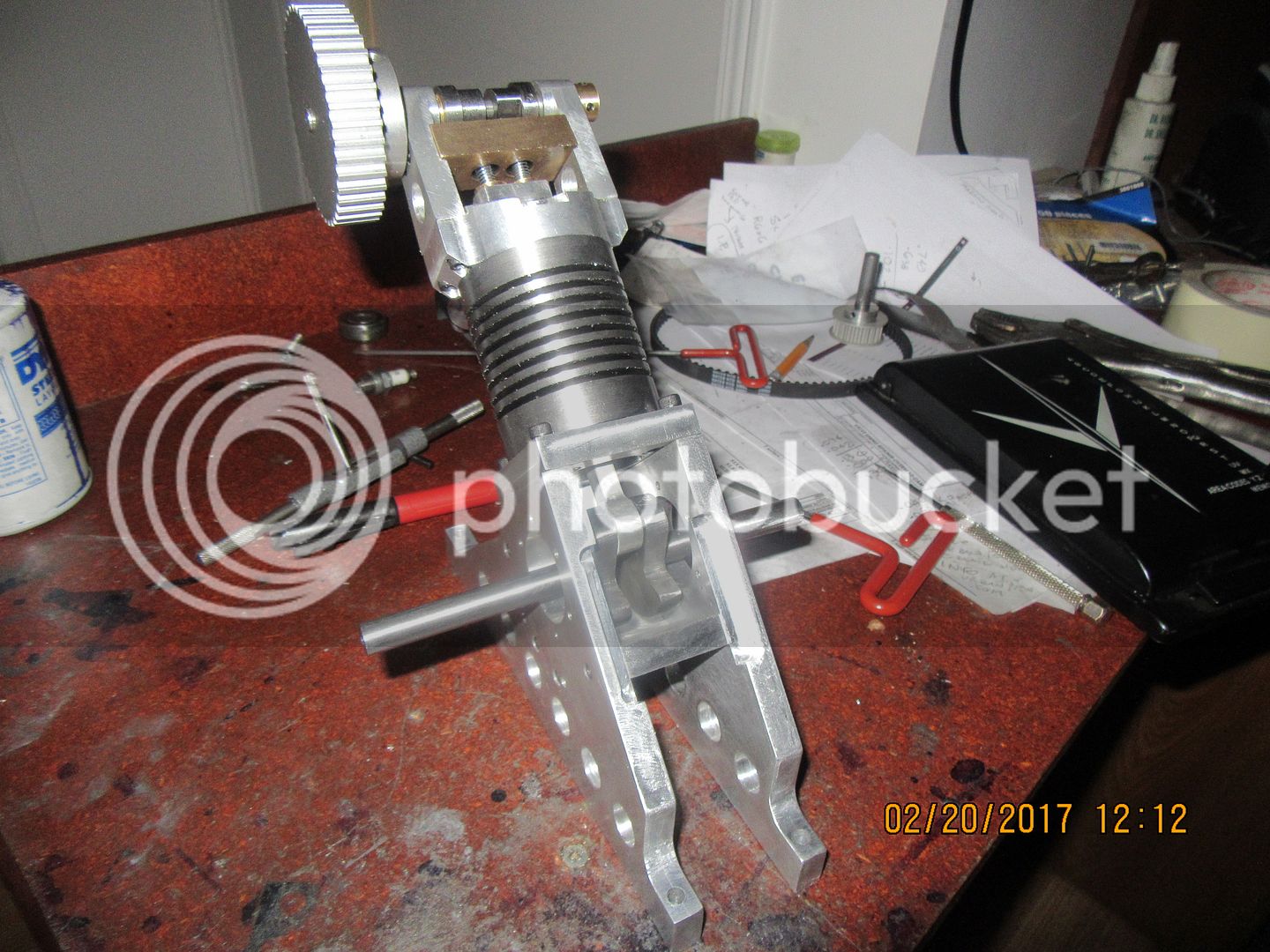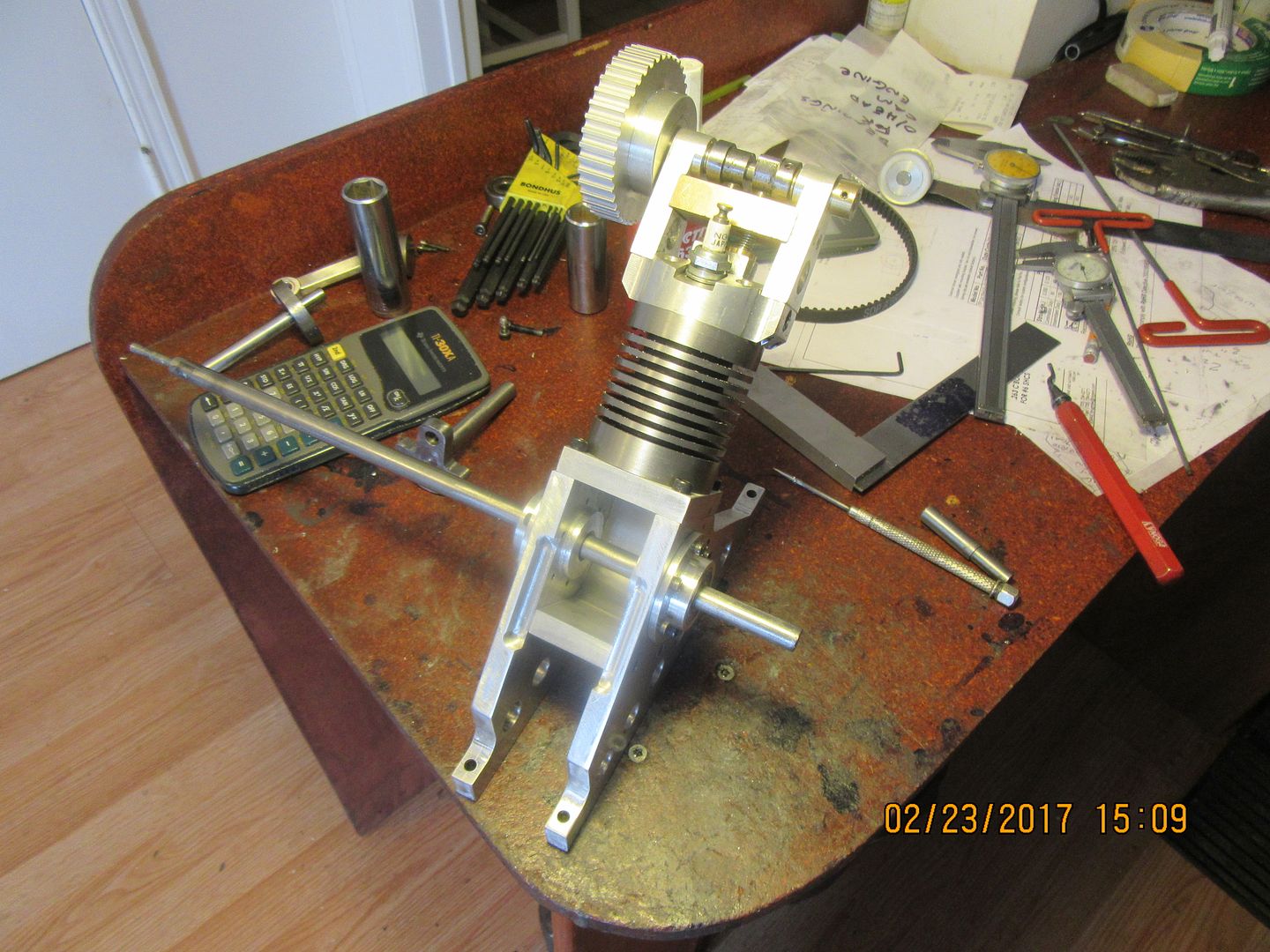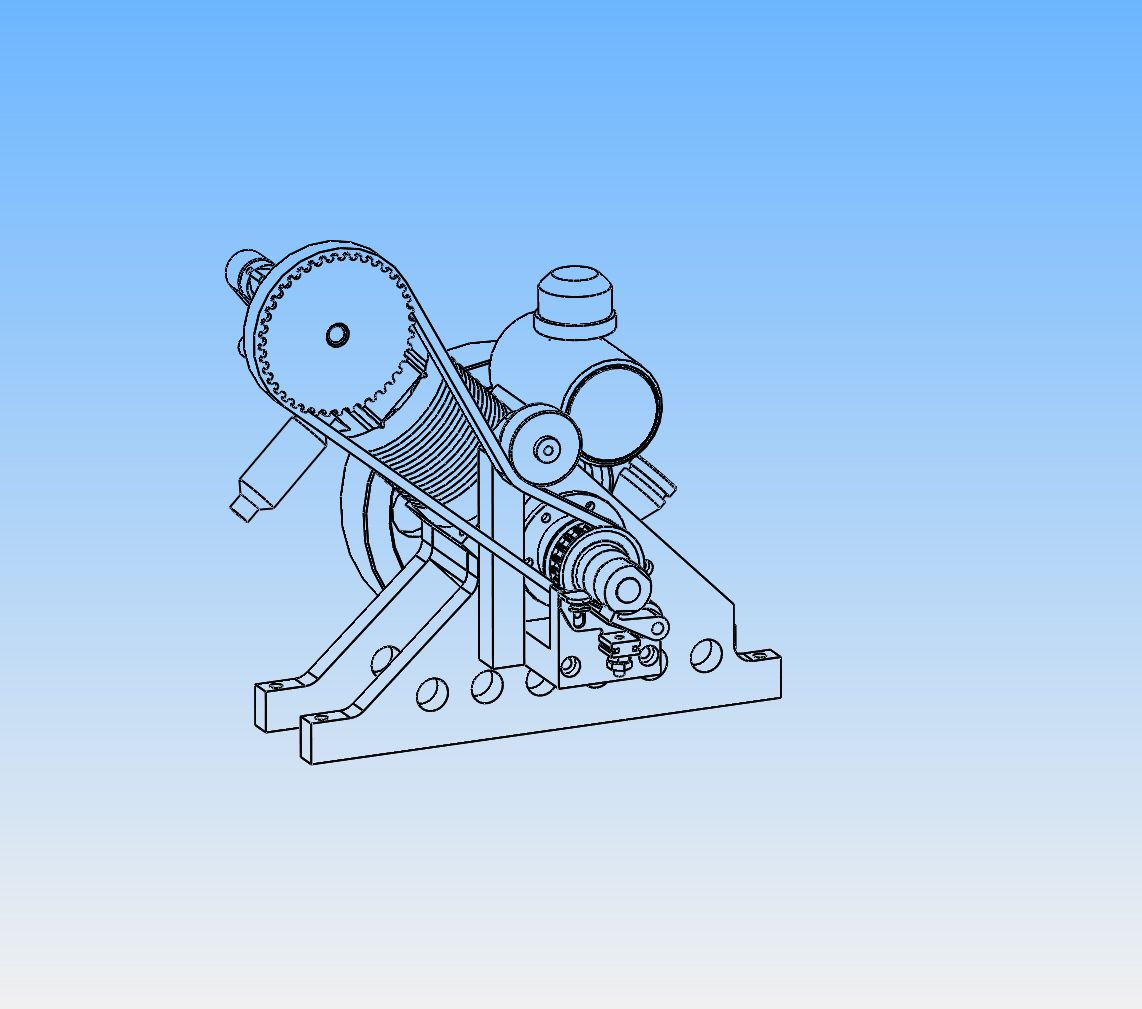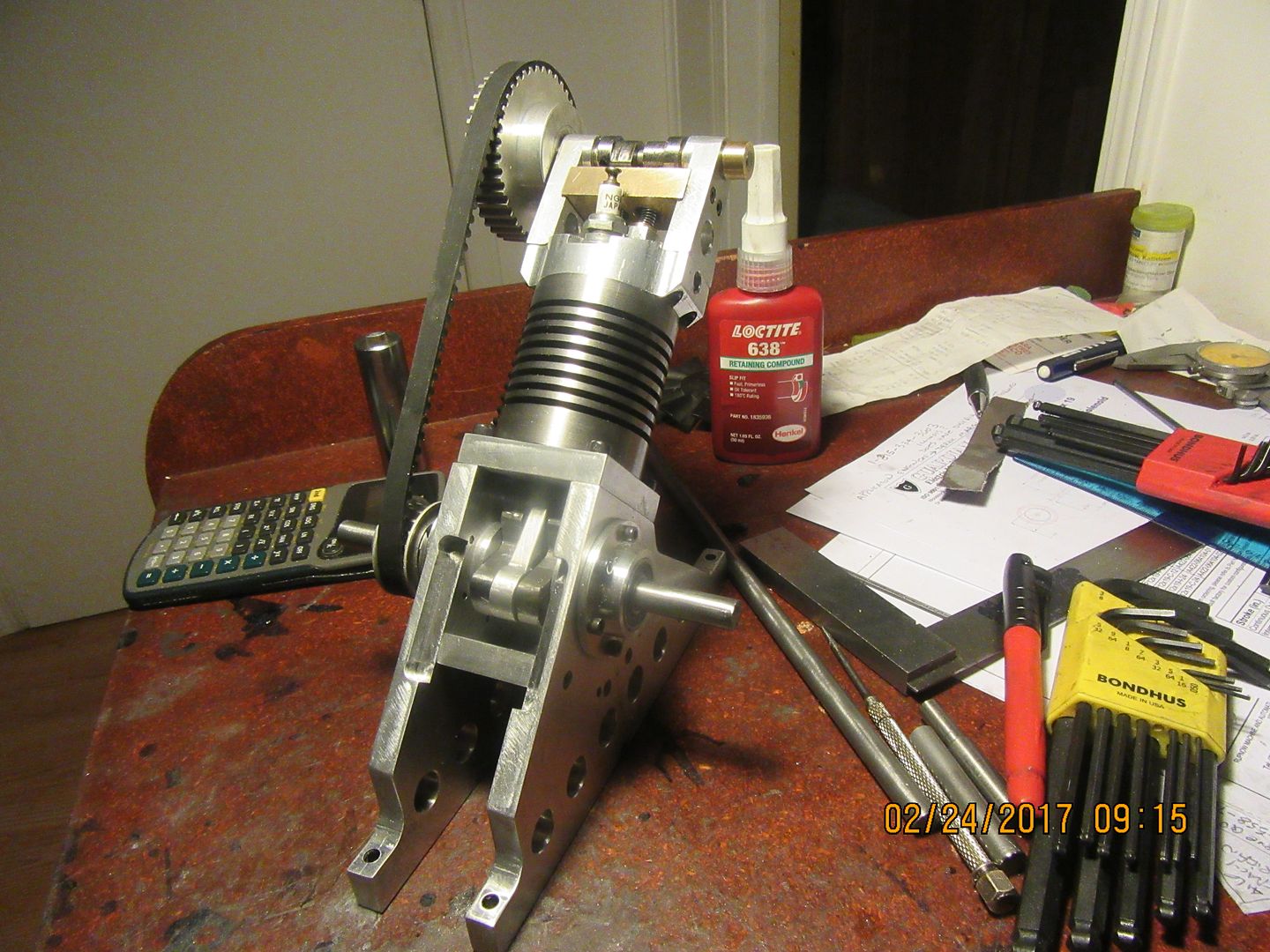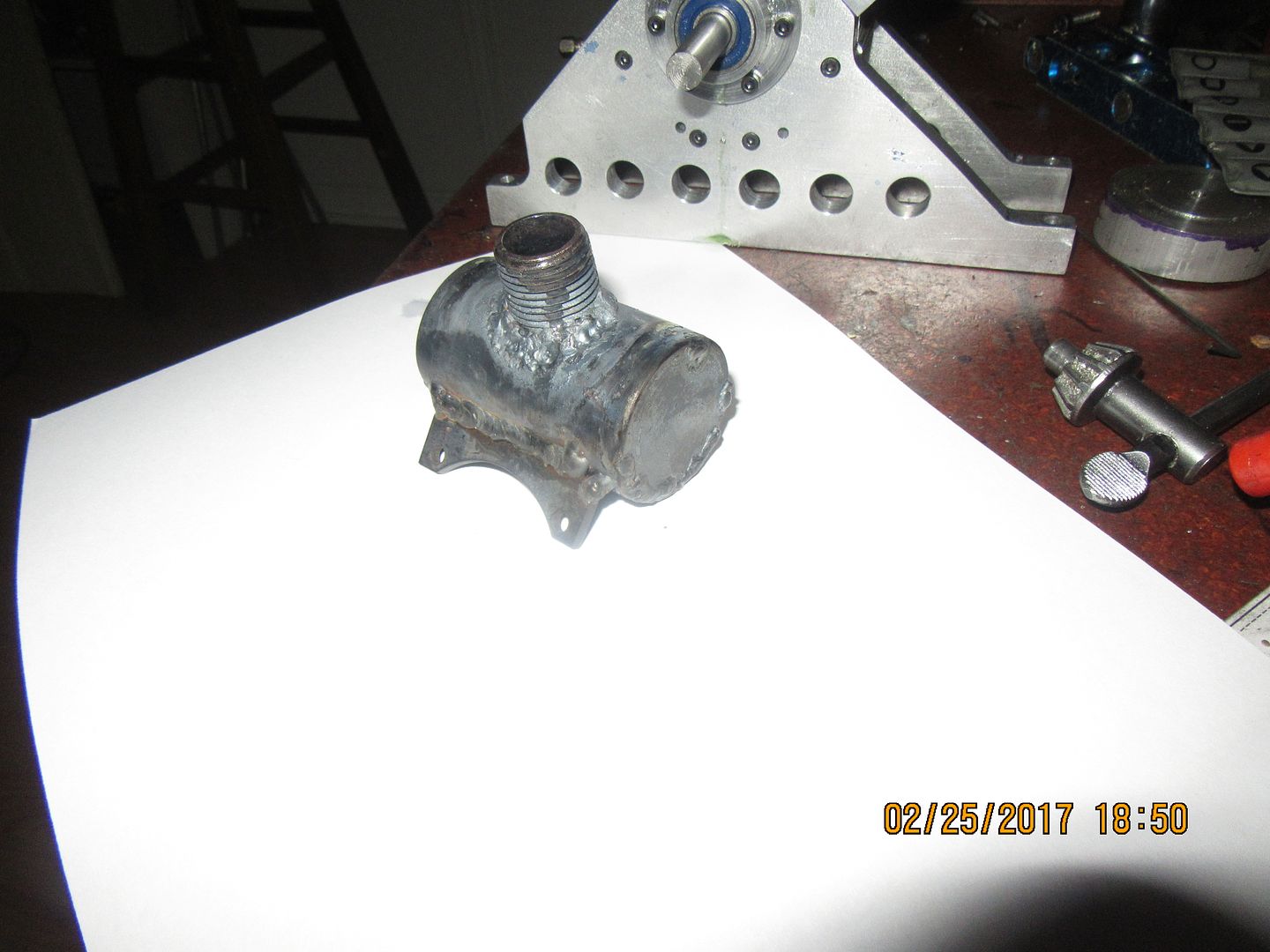This morning I have a piston on the go. It is going to be made from cast iron. Why?---Because when I buy cast iron to make cylinders from, I always buy a piece about 3" longer than I really need, so I have something to hang onto with the lathe chuck while the cylinder is being machined. All these left over bits from making cylinders eventually get recycled into pistons. I could have use aluminum and it would have worked just as well, but I didn't have any aluminum the right size. The outside diameter is turned to be 0.003" larger than the bore of the cylinder. That over-size will get addressed a bit later. I have put the round counterbore into the "open" end of the piston, and cut the ring groove with my .094" wide parting off tool. My next step will be to hone the inner bore of the cylinder with my 3 stone brake cylinder hone to knock down any high spots inside the bore (which was put in with a 1" reamer). Then I will "dress" the piston with 280 grit carborundum paper strips while it is still set up in the lathe until it just starts to act like it might fit into the end of the cylinder, but doesn't slide freely in. At that point I will remove the piston from the lathe and set it up in the chuck on my rotary table to complete the machining operations.







